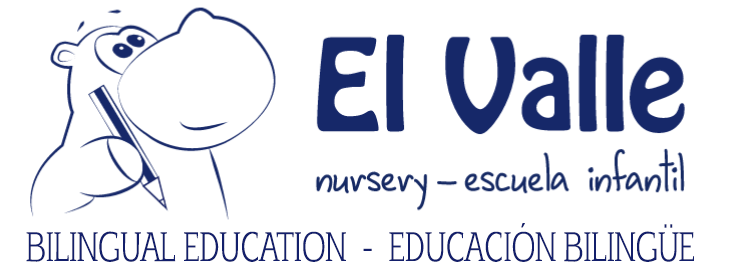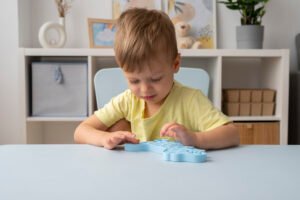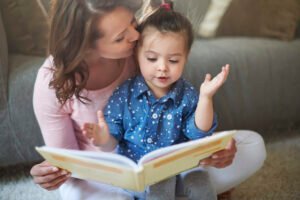
La mentira
“Mentir también es crecer”: La verdad detrás de las mentiras en la infancia
Desde la Escuela Infantil El Valle explican cómo la mentira en los niños no es solo un reto educativo, sino una oportunidad para fomentar la autoestima, la confianza y la comunicación honesta desde casa.
La mentira es algo natural e inherente al desarrollo infantil. Esta conducta, lejos de ser únicamente reprobable, es también una señal de su desarrollo emocional y social.
Demuestra que el niño es consciente de que ha hecho algo malo y suele nacer de la necesidad de protegerse de la decepción y desaprobación de sus padres y va cambiando en función de la edad.
Los niños mienten en la mayoría de las ocasiones por las mismas razones que mentimos los adultos: cuando se sienten atrapados, cuando sienten miedo al castigo o al rechazo, o cuando piensan que mentir hará las cosas más sencillas para todos. Además, el hábito de mentir puede ser una señal de baja autoestima, una llamada de atención que no debe ser ignorada.
Desde la Escuela Infantil El Valle abordamos la mentira a través de una serie de herramientas que pueden ser útiles para trabajar también una comunicación honesta desde casa:
– Evitar preguntas que inviten a mentir: formular preguntas abiertas y de manera no acusatoria ayuda a que el niño se sienta seguro para decir la verdad.
– No criticar ni etiquetar: Llamar “mentiroso” a un niño solo refuerza esa identidad negativa en su mente.
– Evitar respuestas exageradas ante comportamientos negativos: El miedo a la respuesta de los adultos puede hacer que, en lugar de confiar en nosotros cuando cometan un error la próxima vez, eviten contarnos la verdad. Es importante poner límites, pero de manera respetuosa y cariñosa.
– Diferenciar claramente entre la verdad y la versión distorsionada: Ayudar al niño a reconocer, sin juicio, las diferencias entre lo que realmente ocurrió y lo que ha contado.
– Enfocarse en las soluciones: En lugar de buscar culpables, es mejor centrar la atención en cómo resolver el problema o corregir el error.
– Ser un modelo de honestidad: Los niños aprenden más de lo que ven que de lo que se les dice; ser honesto en nuestras propias acciones es esencial.
– Respetar su privacidad: Fomentar un ambiente de confianza implica también dar espacio y respetar la intimidad de los niños.
– Establecer un compromiso de honestidad mutua: decirles a los niños que intentaremos siempre decirles la verdad (adaptada a su edad). Asimismo, cuando un niño miente, es importante transmitirle que sabemos la verdad, pero sin recurrir al castigo severo ni a la humillación, ya que estas prácticas suelen ser contraproducentes.
En conclusión, la honestidad se cultiva con paciencia, comprensión y ejemplo. Abordar las mentiras con empatía y firmeza permite formar niños más seguros de sí mismos y conscientes del valor de la verdad.
..
“Lying is part of growing up“: Understanding childhood lies from a developmental perspective
At El Valle Nursery School, we believe that lying in young children should not only be viewed as a behavioural challenge, but also as an opportunity to nurture self-esteem, trust and open communication at home.
Lying is a natural and inherent part of child development. Far from being purely blameworthy, it often signals a child’s emotional and social growth.
A lie can indicate that a child understands they’ve done something wrong. It usually stems from a need to avoid disappointment or disapproval, and evolves with age.
In most cases, children lie for the same reasons adults do: when they feel cornered, when they’re afraid of punishment or rejection, or when they think a lie might make things easier for everyone involved. Sometimes, frequent lying may even point to low self-esteem – a silent call for attention that should not be overlooked.
At El Valle Nursery School, we approach lying with a range of strategies that can also support honest communication at home:
-
Avoid asking questions that invite a lie: Framing questions in an open and non-accusatory way helps children feel safe enough to tell the truth.
-
Don’t criticise or label: Calling a child a “liar” reinforces a negative identity and may cause more harm than good.
-
Avoid overreacting to negative behaviour: If children fear how adults will respond to mistakes, they may learn to hide the truth instead of turning to us for support. It’s vital to set clear boundaries with warmth and respect.
-
Help them distinguish fact from fiction: Gently guiding children to recognise the difference between what actually happened and what they’ve said – without judgement – can be a powerful learning experience.
-
Focus on solutions rather than blame: Shifting attention towards how to fix a problem or learn from it is more constructive than seeking out who’s at fault.
-
Be a model of honesty: Children learn more from what we do than what we say. Demonstrating honesty in our own behaviour is key.
-
Respect their privacy: Building trust also means recognising and honouring a child’s need for personal space.
-
Foster a mutual commitment to honesty: Let children know we will always strive to be truthful with them, in ways that are age-appropriate and considerate. And when a child lies, it’s important to let them know we’re aware of the truth, but without resorting to harsh punishments or shame – approaches that often backfire.
In short, honesty is something we cultivate with patience, understanding and example. By addressing lies with empathy and consistency, we help raise children who are more confident, emotionally secure, and who understand the true value of telling the truth.



